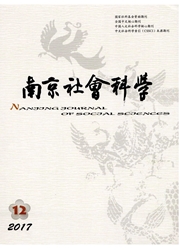

 中文摘要:
中文摘要:
动态随机一般均衡模型声称避免了“卢卡斯批判”,但在2007年的美国次贷危机及其后的经济危机之后,学术界和决策层开始对主流经济学研究方法进行反思,尤其是作为财政政策和货币政策工具的动态随机一般均衡方法。学者们认为,动态随机一般均衡模型未能及时地对危机作出预警,主要原因在于其微观基础的不足。具有更明确微观基础的计算方法是改进动态随机一般均衡模型的一个重要研究方向。通过结合其它计算方法的特点,改进动态随机一般均衡模型,有望能使模型既能为正常的决策提供依据,又能使模型及时地预警危机。
 英文摘要:
英文摘要:
In the aftermath of 2007 subprime mortgage crisis in the U. S. and its subsequent economic crisis, scholars and decision makers began to reflect on the mainstream research methods, particularly on dynamic stochastic general equilibrium method deemed to be suited for the research of fiscal policy and monetary policy. The reason of the failure of dynamic stochastic general equilibrium to predict a crisis can be mainly attributed to its micro foundation. Therefore, more explicit micro foundation computational method is an important research direction to improve the dynamic stochastic general equilibrium model. Combining multiple computational methods to improve dynamic stochastic general equilibrium method can help to improve economic models' performance to be helpful in both daily decision making and crisis forecasting.
 同期刊论文项目
同期刊论文项目
 同项目期刊论文
同项目期刊论文
 期刊信息
期刊信息
